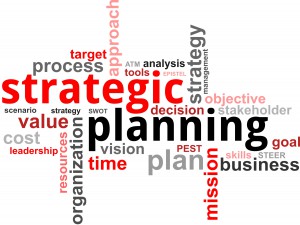The Value of a Strategic Plan

An increasing number of nonprofit organizations are seeking accreditation from an outside source to demonstrate best practices to their stakeholders. This 300 words post seek to identify one key organization providing accreditation services to nonprofits and evaluate whether or not its accreditation matters in terms of demonstrating best practices.
Strategic planning is an essential process in for-profit or nonprofit organizations. By focusing on nonprofit organizations, many leaders understand the need for strategic planning since it influences capacity building and strategic performance (Worth, 2017). These leaders have a mandate of formulating strategies and identify tools or resources that can help the organization meet its goals. Careful planning, collaboration, and communication are crucial factors that stakeholders are expected to demonstrate during the formulation of a strategic plan. A strategic plan is of significant value, considering that it enables leaders to plan appropriately through critical decision-making. Still, through the plan, the management outlines ways of enhancing marketing and fundraising initiatives.
The value of a strategic plan cannot be overlooked, taking into account that leaders come together in making crucial decisions on how to meet the mission and vision of an organization (Worth, 2017). Without having a consensus, it can be challenging to create a strategic plan. This also helps reduce stress among the leaders since the plan clearly outlines the roles every stakeholder should play. Further, it points out the organization’s strengths, weaknesses, and frameworks that establish the direction an organization should follow to be successful. This increases operational efficiencies since the management discussions assist in aligning the agency’s functional activities.
Moreover, with a strategic plan, leaders in nonprofit organizations can enhance marketing and fundraising efforts. As illustrated by Worth (2017), the SWOT analysis helps the leaders identify the agency’s strengths, weaknesses, opportunities, and threats. For instance, the evaluation of the opportunities influences the development of marketing fundraising strategies for boosting the agency’s mission. These strategies allow the agency to attract new supporters and even deepen the relationship with existing partisans. Once the marketing and fundraising strategies are formulated, the leaders can always refer or make amendments if they encounter challenges in the implementation phase.

I have just finished reading this article. I really enjoyed your clearly written and thought-provoking facts. While much has been written on this topic, your article expresses both the positive and negative aspects of this important topic. Thank you for your thorough research and clear writing.
I like it, very educative.
Hey, this is a very informative post. I enjoyed reading.